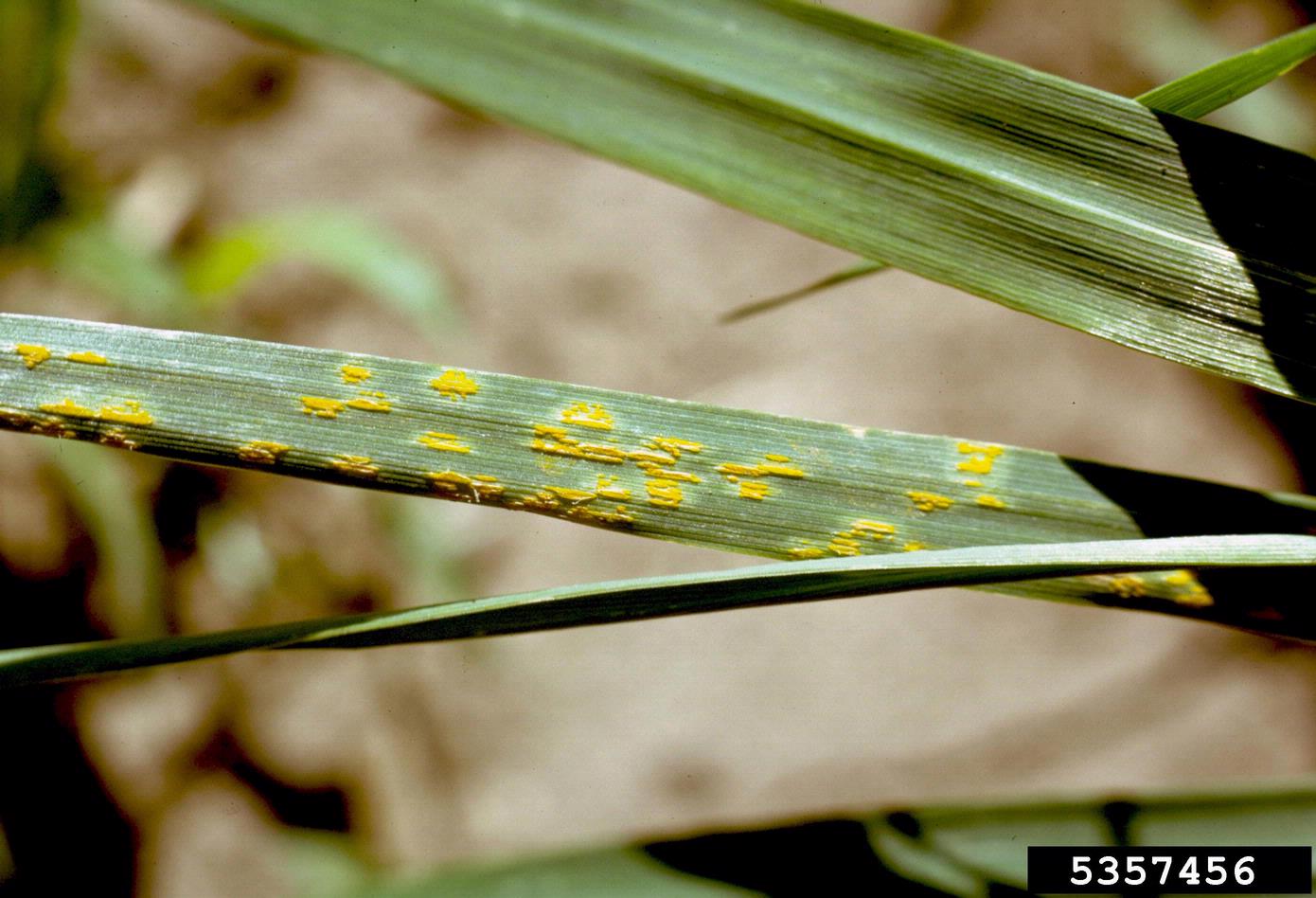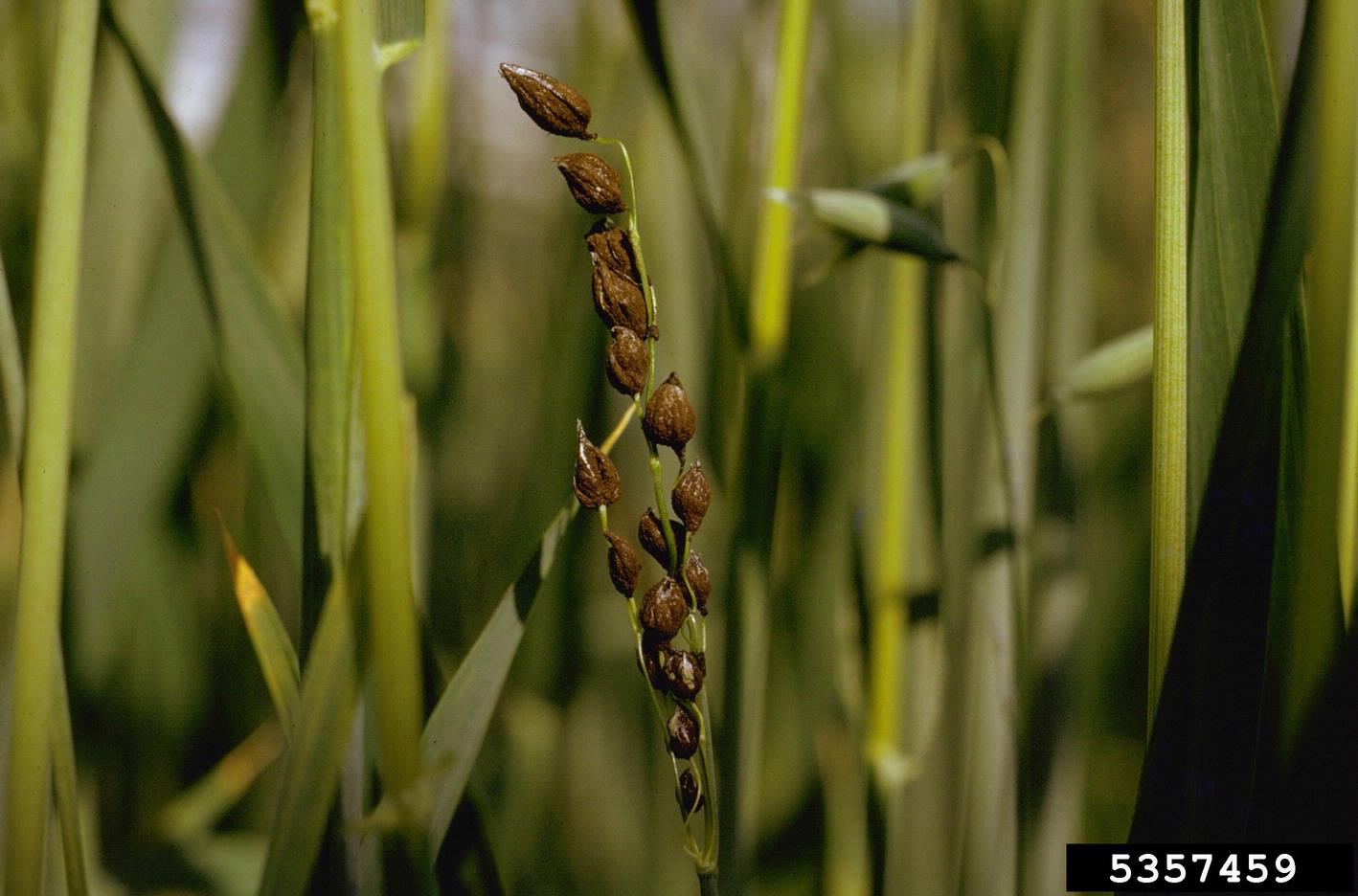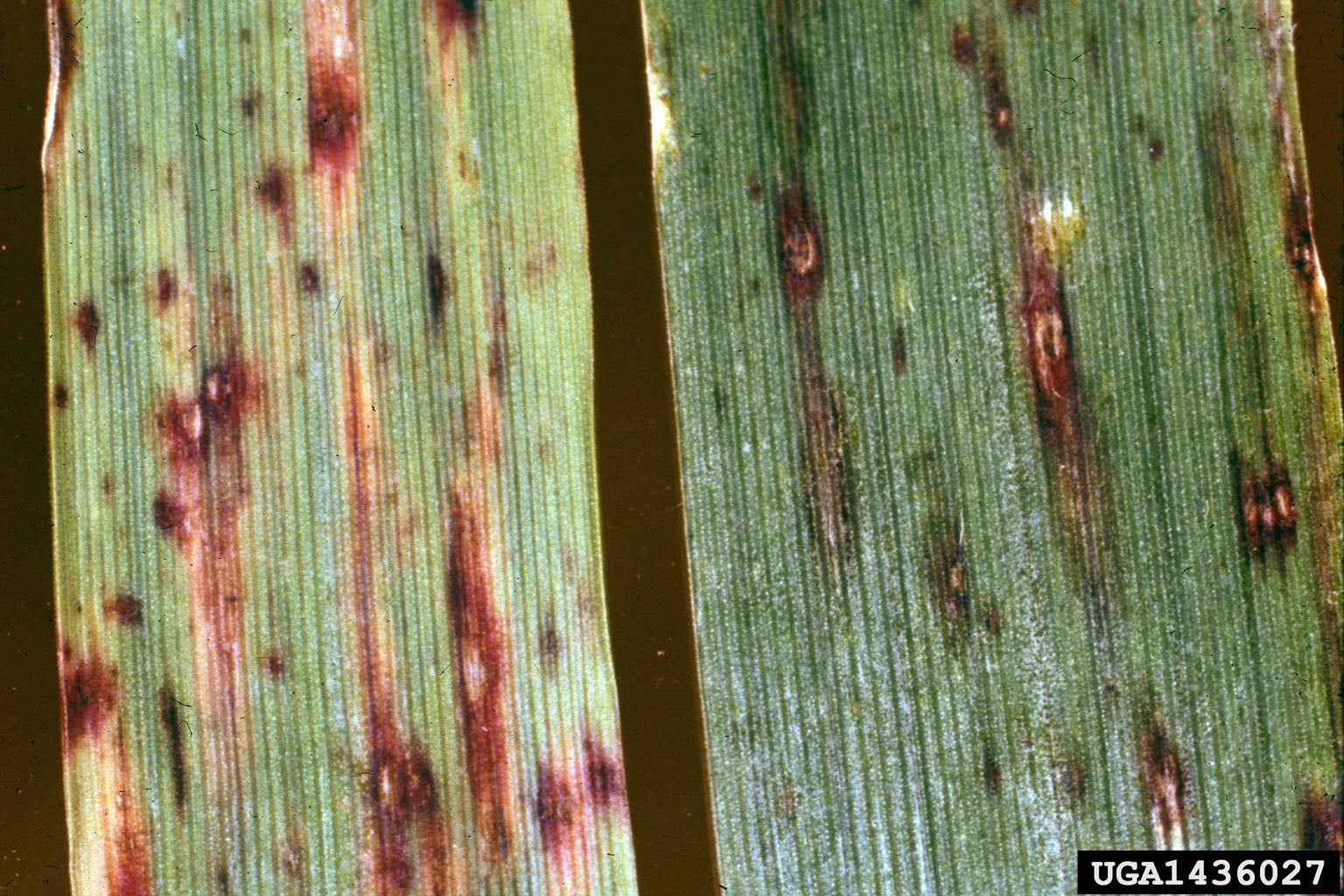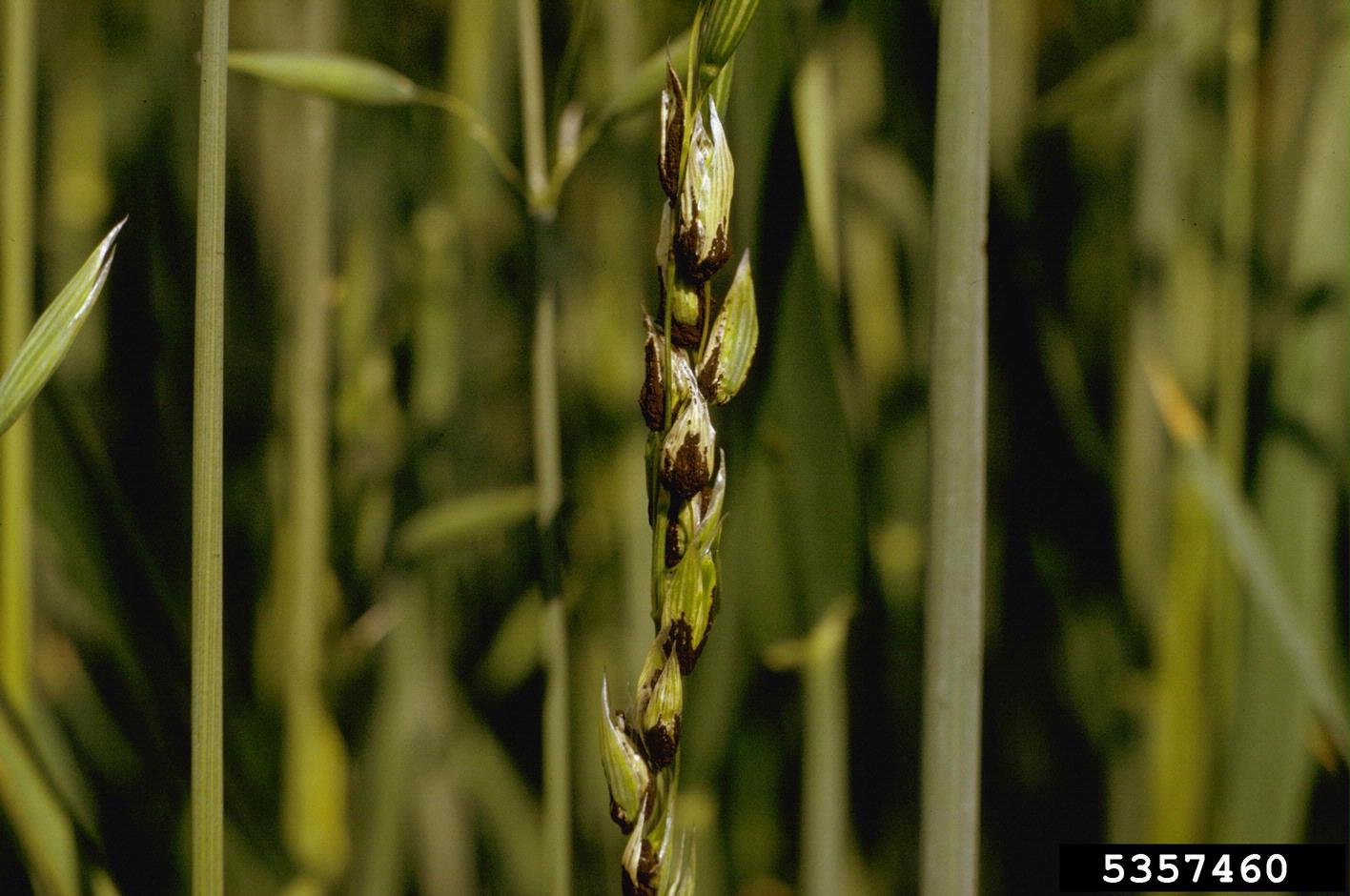Controlling Oat Culm Rot – How To Treat Oats With Culm Rot Disease


Culm rot of oats is a serious fungal disease often responsible for crop loss. It is not uncommon, according to oats culm rot info, but can be controlled if caught in the early stages. Oats with culm rot are susceptible because they are planted in spring when humid conditions are optimum and allow the disease to develop. However, fall planted oats in warmer areas of the country are also susceptible, as winters are humid there. Learn more about culm rot of oats in this article.
What is Oats Culm Rot?
You may be wondering, just what is oats culm rot? To explain, you first need to understand that the culm is the stem of the oats, sometimes called the foot. Stems are usually hollow, making them susceptible to infection by spores that cause rot. Young seedlings are generally attacked as they reach this stage of growth. Plants are sometimes infested with the rot as heads are developing. Stems and roots develop a rot, causing plants to die. Controlling oat culm rot in the field in which it happened is a lengthy process.
Controlling Oat Culm Rot
Land should not be planted with oats for two years. After it is well tilled, treated seeds are planted to discourage the development of the disease. This is not a total cure, as the soil may also be affected. Red leaves on the plants are often a sign that they are being attacked by fusarium blights or pythium root necrosis. These fungal issues and others are often present in oat fields, attacking plants when conditions are optimum. This limits oat production in many of the top-producing states, including the oats grown in home garden. It also decreases the quality of oats that make it to harvest. The next time you wake up with a hot bowl of oatmeal on a cold morning, consider the journey and the difficulty growers have gone to in growing this crop and getting it to you. You will appreciate it all the more.
Gardening tips, videos, info and more delivered right to your inbox!
Sign up for the Gardening Know How newsletter today and receive a free copy of our e-book "How to Grow Delicious Tomatoes".

Becca Badgett was a regular contributor to Gardening Know How for ten years. Co-author of the book How to Grow an EMERGENCY Garden, Becca specializes in succulent and cactus gardening.
-
 Moody Blooms For Spring: 8 Types Of Black Flowers To Add Drama To Spring Displays
Moody Blooms For Spring: 8 Types Of Black Flowers To Add Drama To Spring DisplaysFrom midnight burgundies to inky violets, several types of black flowers can enrich and embolden a spring display. Try these brooding bloomers for a moody garden
By Tonya Barnett
-
 Can Snake Plants Live Outside? Everything You Need To Know For Snake Plants Al Fresco
Can Snake Plants Live Outside? Everything You Need To Know For Snake Plants Al FrescoSnake plants can live outside given the right conditions, but be careful that they don't take over! Learn the best way to use snake plants in your landscape.
By Mary Ellen Ellis
-
 Oat Rust Control: Treating Oats With Crown Rust
Oat Rust Control: Treating Oats With Crown RustCrown rust is the most widespread and damaging disease found in oats. For individual growers, oats with crown rust can result in a total crop loss. Click here to learn more about control and treatment of oat rust.
By Amy Grant
-
Barley Yellow Dwarf Virus In Oats – Treating Oats With Barley Yellow Dwarf
If you grow oats, barley, or wheat on your small farm or backyard garden, you need to know about barley yellow dwarf virus. This is a damaging disease that can cause losses of up to 25 percent. Know the signs and what you can do to in this article.
By Mary Ellen Ellis
-
 Oats Loose Smut Control – What Causes Oat Loose Smut Disease
Oats Loose Smut Control – What Causes Oat Loose Smut DiseaseIf you grow cereal crops, it’s good to understand the basics about loose smut of oats in order to prevent it. Click this article for information about what causes oat loose smut, as well as tips on oats loose smut control.
By Teo Spengler
-
Victoria Blight In Oats – Learn To Treat Oats With Victoria Blight
Victoria blight in oats once reached epidemic proportions. As a result, many oat cultivars that have proven to be resistant to crown rust are susceptible to Victoria blight of oats. Learn about the signs and symptoms of oats with Victoria blight in this article.
By Mary H. Dyer
-
 Oat Leaf Blotch Info: Recognizing Symptoms Of Oat Leaf Blotch
Oat Leaf Blotch Info: Recognizing Symptoms Of Oat Leaf BlotchCrop losses of as much as 15 percent have been reported from leaf blotch of oats. While this isn't a huge number, in commercial settings and in smaller fields, the impact is significant. However, oat leaf blotch control is possible. Click this article to learn more.
By Bonnie L. Grant
-
 Oat Covered Smut Control – Treating Oats With Covered Smut Disease
Oat Covered Smut Control – Treating Oats With Covered Smut DiseaseSmut is a fungal disease that attacks oat plants. There are two kinds of smut: loose smut and covered smut. If you are growing oats, you probably need oats covered smut information. Learn about oats with covered smut and tips on oat covered smut control here.
By Teo Spengler
-
Oats With Powdery Mildew – How To Treat Powdery Mildew On Oats
While powdery mildew on oats isn’t the worst thing that can happen, it can markedly diminish crop quality and yield. Unfortunately, there isn’t a lot that growers can do about the pesky fungal disease. Click this article to learn more.
By Mary H. Dyer
-
Halo Bacterial Blight Control – Treating Halo Blight In Oats
Halo blight in oats is a common, but nonlethal, bacterial disease that afflicts oats. The following oats halo blight info discusses the symptoms of oats with halo blight and management of the disease. Click here for more information.
By Amy Grant